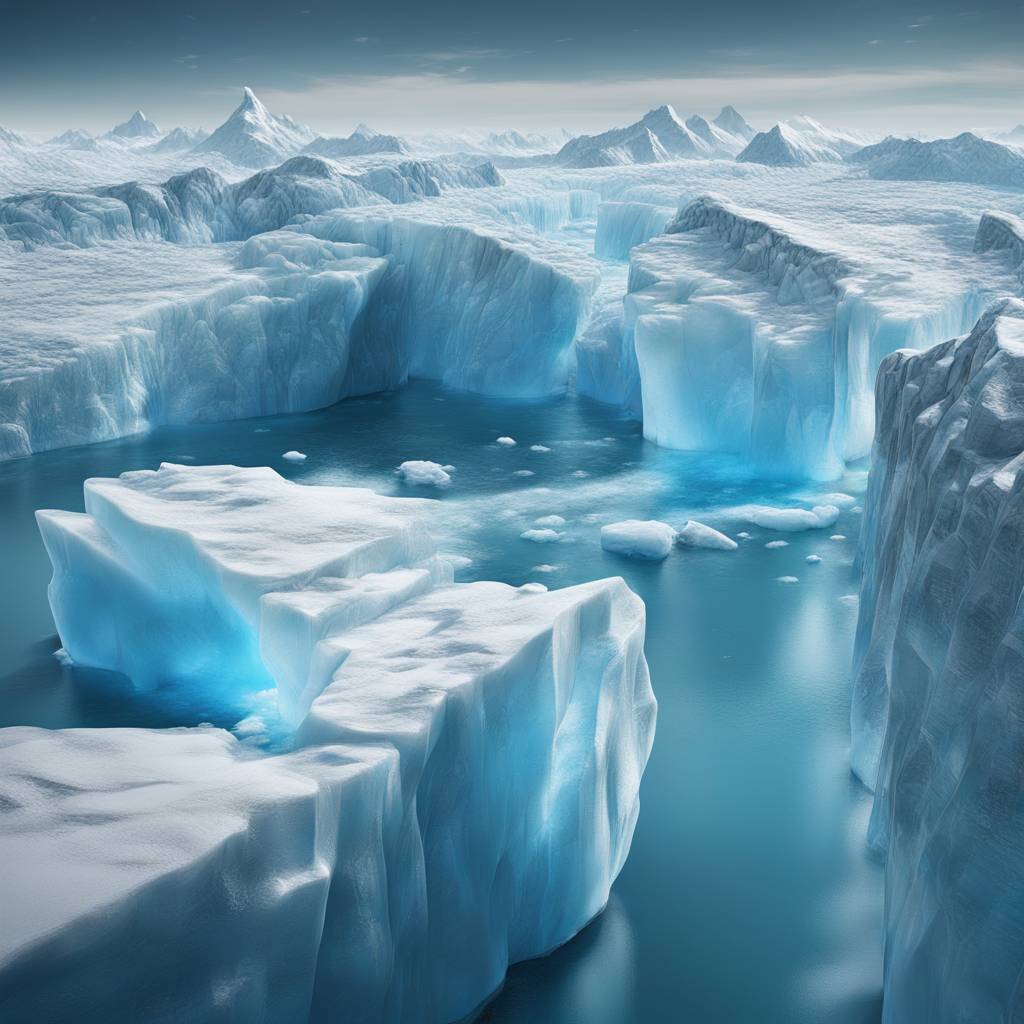Ground-based measuring devices and aircraft radar operated in the far northeast of Greenland have revealed that the 79° N-Glacier is losing a significant amount of ice. Since 1998, the thickness of the glacier has decreased by more than 160 metres, with warm ocean water flowing under the glacier tongue causing the ice to melt from below. Additionally, high air temperatures have led to the formation of lakes on the surface, with water from these lakes flowing through massive channels in the ice and into the ocean. A research team reported that one channel reached a height of 500 metres, while the ice above was only 190 metres thick, highlighting the impact of global warming on the glacier.
A scientific study published in The Cryosphere focused on how global warming is affecting the stability of the floating ice tongue of the 79° N-Glacier in northeast Greenland. The study incorporated data from measurements conducted with autonomous radar devices, measurement flights with the polar aircraft of the Alfred Wegener Institute, and satellite data. These measurements showed significant changes in the ice thickness of the glacier, highlighting the impact of global warming on glaciers in Greenland and Antarctica. The study emphasizes the importance of understanding how the instability of ice shelves can lead to an acceleration of ice flow and ultimately contribute to sea level rise.
According to Dr. Ole Zeising, an AWI glaciologist and the first author of the publication, radar measurements have been used since 2016 to determine melt and thinning rates on the 79° N-Glacier. Aircraft radar data from 1998, 2018, and 2021 were also utilized to track changes in ice thickness over the years. The researchers found that the glacier has undergone significant changes in recent decades due to the influence of global warming, highlighting the rapid response of glaciers to changes in environmental conditions.
The combination of warm ocean inflow and a warming atmosphere has had a profound impact on the floating ice tongue of the 79° N-Glacier, with extremely high melt rates occurring near the transition to the ice sheet. Large channels have formed on the underside of the ice from the land side, likely due to the drainage of water from lakes through the glacier ice. These processes have contributed to a significant thinning of the glacier in recent decades. Despite a decrease in melt rates since 2018, researchers attribute these changes to warm ocean currents and atmospheric warming.
The floating glacier tongue has become 32% thinner since 1998, with a 500-metre-high channel forming on the underside of the ice spreading towards the inland. The researchers believe that these changes are a result of warm ocean currents in the cavity below the floating tongue and surface meltwater runoff due to atmospheric warming. While the potential breaking apart of the glacier tongue is expected in the coming years to decades, researchers are studying the process in detail to gain insight into the collapse. By building a database before the collapse, the scientific community aims to better understand the dynamics of ice shelves and their response to climate change.













